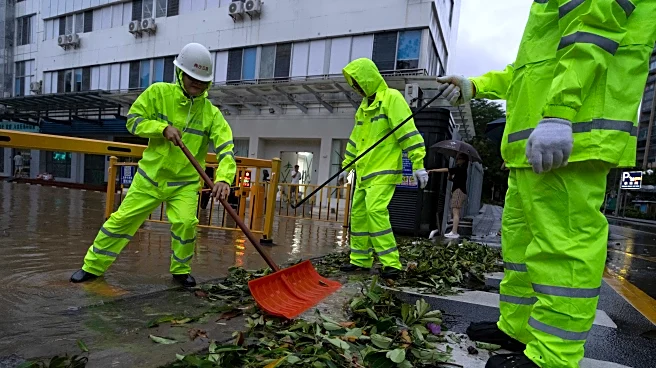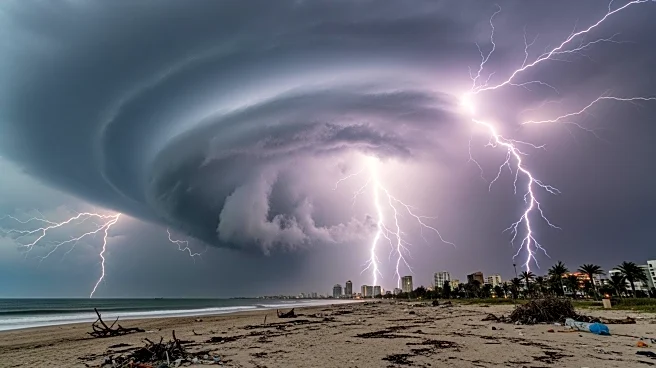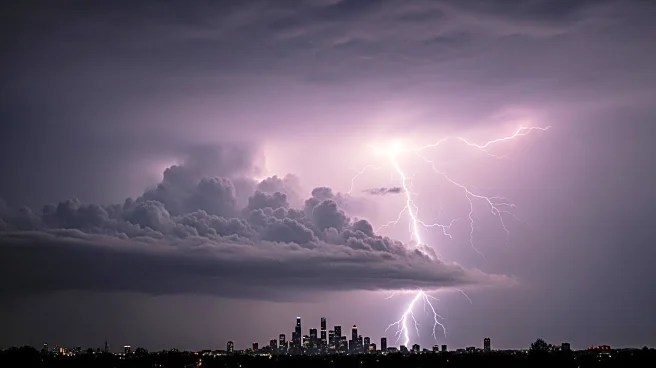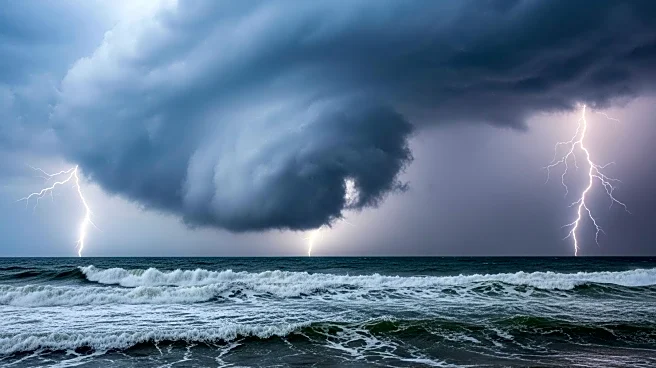What's Happening?
Typhoon Ragasa, also known as Nando, emerged on September 18 in the western Pacific Ocean and rapidly intensified to Category 5 strength. It struck northern Luzon in the Philippines and Taiwan on September 22, causing floods, landslides, and significant damage to crops and property. The storm, with sustained winds exceeding 145 knots, is considered the strongest typhoon of 2025. As of September 23, Ragasa has displaced tens of thousands of people, caused multiple deaths, and led to power outages and extensive damage in the Philippines. The storm is expected to make landfall in southern Guangdong province in China on September 24, before moving into northern Vietnam and Laos.
Why It's Important?
The impact of Typhoon Ragasa highlights the vulnerability of regions in the northwest Pacific to severe weather events. The storm's destruction in the Philippines and Taiwan underscores the need for improved disaster preparedness and infrastructure resilience. As Ragasa approaches China, the potential for further damage and economic disruption is significant, especially in densely populated areas. The typhoon season's activity, although quieter than usual, demonstrates the unpredictable nature of climate-related phenomena and the importance of international cooperation in disaster response and climate adaptation strategies.
What's Next?
As Ragasa moves towards China, authorities are preparing for potential evacuations and damage control measures. The storm's trajectory suggests it will weaken slightly, but it remains a threat to coastal regions. Cleanup efforts in the Philippines are underway, while Chinese cities brace for the storm's impact. The international community may need to provide support for affected areas, and discussions on climate resilience and disaster management are likely to intensify.
Beyond the Headlines
The occurrence of such powerful storms raises questions about the long-term effects of climate change on weather patterns. The need for sustainable development and investment in climate-resilient infrastructure is becoming increasingly urgent. The storm's impact on agriculture and local economies may have lasting effects, prompting a reevaluation of regional and global strategies for climate adaptation.











